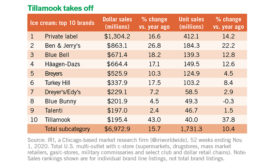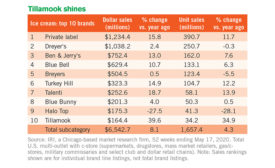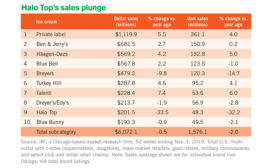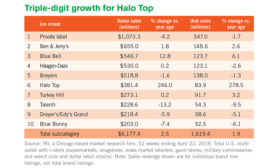Home » Keywords: » sherbet
Items Tagged with 'sherbet'
ARTICLES
Starting March 6, these flavors will be released one at a time, week by week during spring.
Read More
Ice cream dollar sales are hot
Some subcategories face tougher sledding, however.
January 9, 2023
2022 State of the Industry: Ice cream category sees bright future ahead
Frozen novelty sales are particularly enjoying robust strength.
November 22, 2022
Retail ice cream sales tumble
But the ice milk/frozen dairy dessert and sherbet/sorbet/ices subcategories posted positive results.
December 15, 2021
2021 State of the Industry: a divided highway for ice cream and frozen novelties
Sales of ice cream and frozen novelties traveled in two different directions in 2021.
October 26, 2021
Cold treats see a slight cool-off
But all segments within the retail ice cream/sherbet category still posted impressive gains.
July 21, 2021
Retail ice cream sales heat up
All retail ice cream/sherbet categories realized strong dollar and unit sales gains.
December 21, 2020
Retail ice cream sales see strong gains
The subcategory posted very strong recent growth within supermarkets and other retail outlets.
July 29, 2020
Retail ice cream sales tumble
But most of the category’s declines can be attributed to a few brands
January 22, 2020
Ice cream sales cool off
Although some brands made impressive gains, recent sales trends within the ice cream and frozen novelties categories are underwhelming
August 6, 2018
Get our new eMagazine delivered to your inbox every month.
Stay in the know on the latest dairy industry trends.
SUBSCRIBE TODAYCopyright ©2024. All Rights Reserved BNP Media.
Design, CMS, Hosting & Web Development :: ePublishing
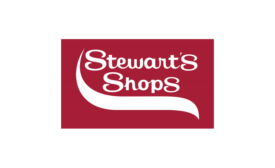

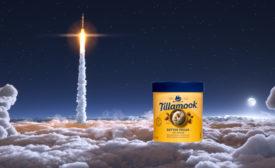



.jpg?height=168&t=1626962658&width=275)
